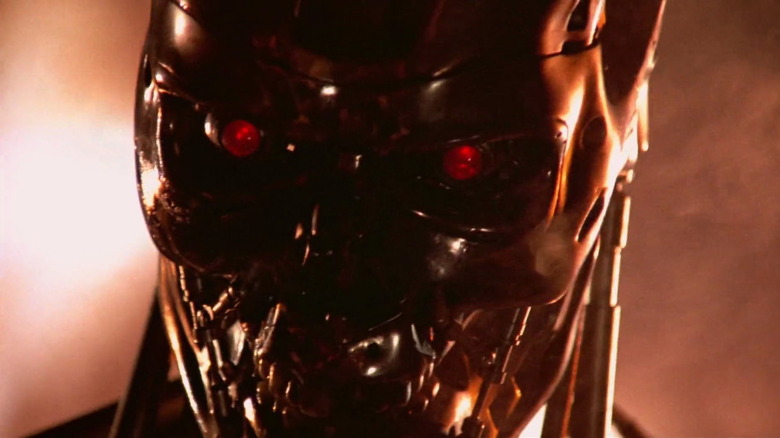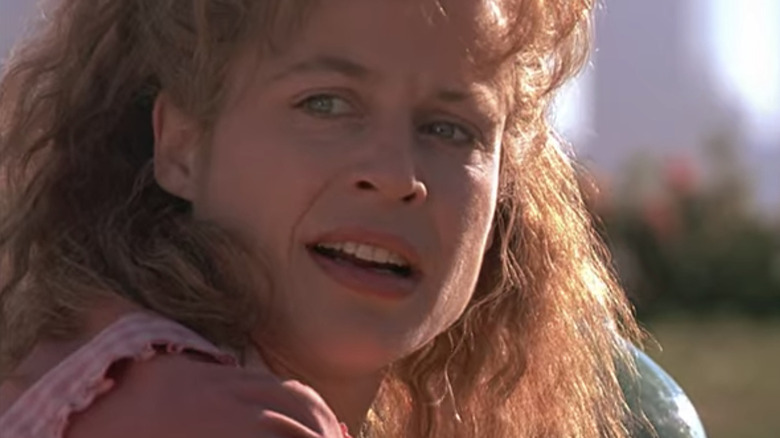
"Where do you get your ideas?" People love to lob this question at writers, and it's often unanswerable, but for James Cameron, the writer-director of "The Terminator," it's a question that scrapes the dust — or nuclear ash — off his darkest dreams.
Cameron would go on to direct "Aliens" and "Terminator 2: Judgment Day," two of the greatest movie sequels of all time, as well as "Titanic" and "Avatar," two of the three highest-grossing films of all time; but "The Terminator" was his breakthrough feature. It's a well-known bit of behind-the-scenes movie lore that the idea for the terrifying T-800 endoskeleton came to him in a dream. However, in an interview with the British Film Institute, Cameron went into more detail about the creative process that said dream inspired.
The image he saw in his head first went on paper before he ever put it to film. John Lennon once joked that a man on a "flaming pie" revealed the Beatles' band name to them in a vision. Cameron, meanwhile, really did see the T-800 walking out of the flames in a fever-induced nightmare. He told the BFI:
"The Terminator came from a dream that I had while I was sick with a fever in a cheap pensione in Rome in 1981. It was the image of a chrome skeleton emerging from a fire. When I woke up, I began sketching on the hotel stationery.
"The first sketch I did showed a metal skeleton cut in half at the waist, crawling over a tile floor, using a large kitchen knife to pull itself forward while reaching out with the other hand. In a second drawing, the character is threatening a crawling woman. Minus the kitchen knife, these images became the finale of The Terminator almost exactly."
The Doomsday Clock And The Sword Of Damocles

As Cameron observed, "The Terminator" does end with a sequence where all of Arnold Schwarzenegger is burned away and the Terminator endoskeleton comes walking out of the fire, just like in his dream. After Kyle Reese (Michael Biehn) blows the murderous cyborg and himself apart, it still terrorizes Sarah Conner (Linda Hamilton) by lurching toward her, dragging its damaged torso across the floor of a factory.
Cameron had his "Terminator" nightmare during the height of the Cold War, when nuclear fears were at the forefront of people's minds. The U.S. had boycotted the 1980 Summer Olympics in Moscow and the Soviet Union would soon boycott the 1984 Summer Olympics in Los Angeles.
Tensions were escalating between the two global superpowers, and the Doomsday Clock was ticking closer to midnight. "Terminator 2" notably features a scene where a dream version of Sarah Conner, played by Linda Hamilton, watches in horror as a mushroom cloud detonates over L.A., enveloping her and a playground full of children.
Cameron likened the threat of nuclear disaster in the early-to-mid 1980s to the Sword of Damocles, dangling over everyone's head. The idea of a fiery apocalypse seemed all too real. He said:
"It seemed very possible, even likely, given enough time. I felt that the world went about its business under this Damoclean threat as if it didn't exist, and that everyone walking the streets around me was delusional."
"The Terminator" is what put Cameron on the map and gave him his career, which now includes two movies that have raked in over $2 billion at the box office. Knowing that might give you incentive to start keeping a dream diary. You never know when there could be a billion-dollar idea in there.
Read this next: The 10 Best Sci-Fi Movie Villains
The post The Nightmarish Inspiration Behind The Terminator appeared first on /Film.
0 Commentaires